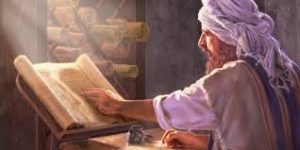The Parable of the Householder
Matthew 13: 51-53
The parable of the householder DIG: How does this parable couple with the parable of the Dragnet? What does each parable represent? How so? How much of the Kingdom of Heaven did the apostles really understand? What was still a mystery to them? What did Yeshua teach them about the messianic Kingdom? What was something old? What will be new? What flow of thought do you see in the nine parables that we have studied?
REFLECT: Of the nine parables, from which one did you learn the most? Why? Which one applies to your life the most right now? Why? Which one motivates you to change the way you look at things? Why?
The one main point of the parable of the householder is that some aspects of the mystery Kingdom have similarities with other facets of God’s Kingdom, while other aspects are new and not found elsewhere.
The fourth couplet is made up of the parables of the Dragnet (saved and lost) and the Householder (old and new), where we see some comparisons between life now and life in the future the messianic Kingdom. Jesus is no longer in front of a crowd by the Sea of Galilee, but alone with His talmidim in Peter’s house.
In summary, then, Jesus asked: Have you understood what I have been saying about the mystery Kingdom of Heaven in these parables? “Yes,” they replied (Matthew 13:51). But, from what they later said and did, we know that their understanding was far from perfect. In reality, however, Jesus did not expect them to know everything right at that time. This is called progressive revelation. The Dispensation of Grace was a mystery to the righteous of the TaNaKh, and they had to be taught slowly and systematically. They were spiritual babies, and just as we do not expect babies to know everything the moment they are born, neither did Jesus expect the Twelve to understand the Kingdom fully at that time. So, on the level at which they were able to understand at that time – they understood.
The Messiah would soon instruct His talmidim to ask the Lord of the Harvest to send out workers into His harvest field (Matthew 9:38) – to proclaim the coming harvest of salvation and judgment. They were to warn people of it and tell them how they could be saved, and also how to escape the torment of hell while they could. Almost immediately we will see the Savior of Sinners begin teaching and training His men for this vital ministry (to see link click Fm – The Training of the Twelve by King Messiah).

Based on their affirmative response, He said to them: Therefore, every Torah-teacher who has been instructed about the kingdom of Heaven is like the owner of a house who brings out of his storeroom new treasures as well as old (Matthew 13:52). Some aspects of the mystery form of the Kingdom are taken from previous and existing facets of God’s Kingdom. In other words, during the messianic Kingdom, some things will remain the same as they are now. We will recognize our friends and family who were believers, we will have fellowship with them, we will have meaningful spiritual ministry, and we will worship the Lord. However, there will be other aspects that are brand new: We will have our resurrection bodies, Satan will be bound, King David will be ruling from Tziyon, but, first and foremost, Jesus Christ will be ruling and reigning from the Temple in the City.
When Yeshua finished these parables it was after sundown, He moved on from Capernaum (Matthew 13:53). He got into a boat with His apostles to cross over to the other side of the Sea of Galilee.
The nine parables we have looked at develop a basic flow of thought: (1) The Parable of the Soils (Et) teaches that there will be a sowing of the Gospel throughout the Church Age. (2) The Parable of the Seed Growing By Itself (Eu) teaches that Gospel seed will have an inner energy so that it will spring to life on its own. (3) The Parable of the Wheat and the Weeds (Ev) teaches that the true sowing will be imitated by a false counter-sowing. (4) The Parable of the Mustard Seed (Ew) teaches that the visible Church will assume abnormal outer growth. (5) The Parable of the Leaven (Ex) teaches that the doctrine of the visible church will be corrupted. (6) The Parable of the Hidden Treasure (Fb) teaches that even with the doctrinal corruption, a remnant will be saved out of Isra’el. (7) The Parable of the Pearl (Fc) teaches that the Gentiles of the invisible universal Church will also come to a saving knowledge of Christ. Both Jews and Gentiles together, the Hidden Treasure and the Pearl form the invisible universal Church. (8) The Parable of the Dragnet (Fd) teaches that the Church Age will end with the judgment of the Gentiles; the unrighteous will be excluded from the messianic Kingdom and the righteous will be taken in. (9) The parable of the householder (Fe) teaches that some aspects of the mystery Kingdom have similarities with other facets of God’s Kingdom, as other aspects are new and not found elsewhere.726



Leave A Comment